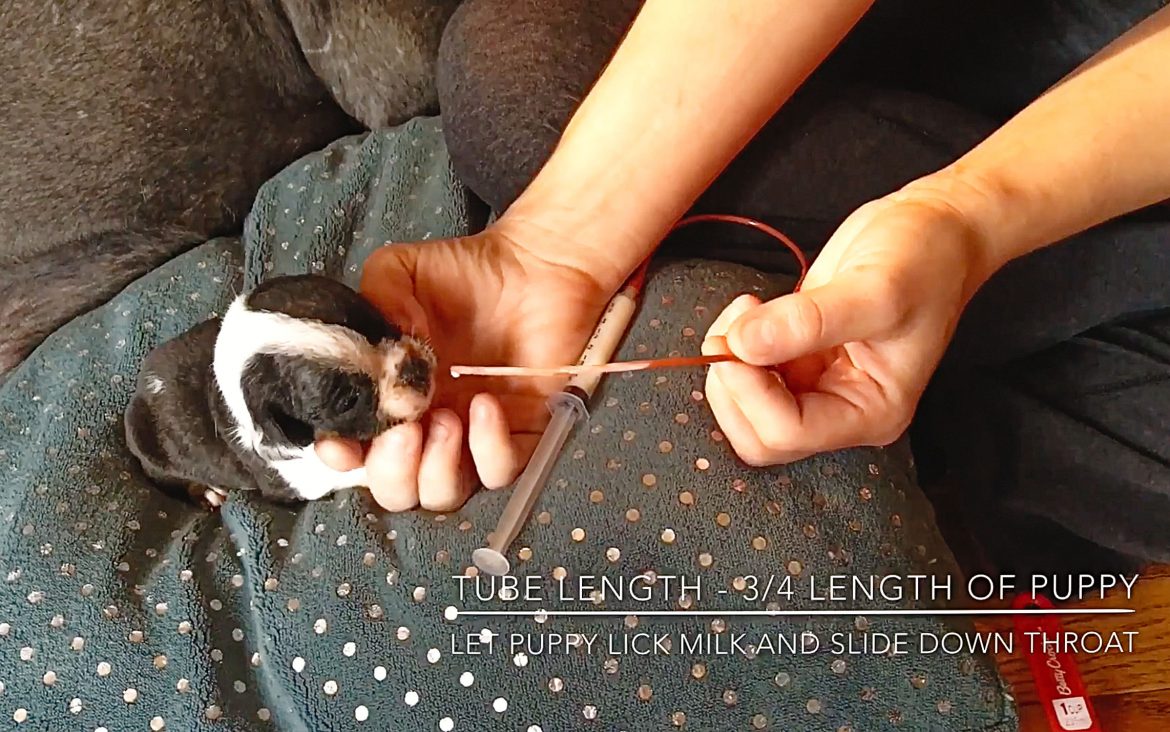While puppies should feed on the mother’s milk for as long as they can, there are occasions when this is not possible. Learning how to tube feed a puppy ensures that your pup is nourished and healthy, especially natural nursing is not possible.
Why feed puppy using a tube?
Tube feeding a puppy is a skill every dog lover should have. Whether you are a pet parent to an adopted puppy or a pit bull puppy breeder taking care of a huge litter, tube feeding comes in handy, especially when the puppy’s life is at risk.
You should tube feed a puppy if;
- The puppy is orphaned
- The puppy is too weak to feed due to sickness
- The mom is rejecting the puppies
- Mother is sick and too weak to nurse
- Mother’s milk is infected with canine mastitis
Puppies need a steady supply of nutrients to grow strong and healthy. If a puppy is not feeding well due to any of the above reasons, it risks ending up with an underdeveloped or sickly body in later years.
Tube feeding a puppy can seem daunting at first but is quite easy when you get the hang of it. It is vital to have all the tools ready before tube feeding a puppy. Also, ensure a vet screen your puppy for any possible diseases before you proceed with feeding.
A common disease that hinders how well a puppy feeds is puppy fading syndrome. Pups with this condition initially appear healthy but grow weak and die within days. It is possible to save a puppy from fading syndrome if you detect the condition early, usually before clinical symptoms appear.
Feeding checklist
You will need;
- A flexible 16-inch urethral catheter
- 12 cc Syringe
- Rubber feeding tube
- Puppy milk replacement formula
- Weighing scale
- Heater
- Cotton balls or paper towels
- Rectal thermometer
- Marker pen
Preparing to feed the puppy
Ensure you have all the above essentials before you begin. Next, you need to measure the appropriate length of the urethral catheter to go into the puppy.
1. Measure the feeding tube
Hold the puppy horizontally and use your thumb and index finger to hold the head steady. Measure with the catheter tube from the last rib to the puppy’s nostril. Mark the point where the puppy’s nostril meets with the tube. This mark helps you know how far to insert the feeding tube into the puppy.
2. Warm the puppy and formula
Check the puppy’s body temperature before feeding it. The ideal temperature should be between 96˚F and 99˚F. Use the rectal thermometer to check the puppy’s temperature. If body temperature is low, use the heater to warm up the puppy to 96˚F. Feeding the puppy in a warm room helps maintain its body heat. Also, you could place the puppy on a preheated microwavable heating pad to maintain body temperature.
Pup tip: Never use an electric heating pad as you risk injuring the puppy.
Warm the puppy formula by placing it in a bowl of warm water. Do not microwave the formula lest it becomes too hot and burns the puppy’s stomach. If you must microwave, ensure you test the formula on your palm to see if it is too hot. Allow the formula to cool down to a lukewarm temperature before loading it into the syringe.
3. Weight the puppy
Weigh the puppy before feeding it. This weight will help you calculate how much formula to feed the puppy. Ensure you weigh the puppy with each feeding sessions. It helps you keep track of their growth progress and ensures they are developing as they should.
4. Prep the formula
Fill the syringe with enough formula for each puppy. The standard measure for puppy formula is 1cc per ounce of body weight. Draw an extra cc of air, then gently depress the plunger to let out a tiny drop of formula. Doing this helps get rid of air bubbles in the formula that can cause puppy bloating. Also, letting out tiny droplets of formula helps you know if the syringe is working properly.
5. Feeding the puppies
Hold the puppy’s head with the nose pointing down before inserting the feeding tube. It prevents the puppy’s airway from opening and ensures you do not insert the tube in the wrong direction.
Next, insert the feeding tube towards the left of the puppy’s mouth. Do it gently and allow the puppy’s swallowing reflex to guide the tube inside. Ensure the tube reaches the point you marked with the pen. Hold the marked point with the thumb and index finger to prevent it from moving while feeding.
Test if the tube is in the right channel by pinching the puppy’s tail or toe. If the puppy becomes vocal, then you did it right. If the puppy makes no sound or starts to struggle, remove the tube immediately and start again.
With the puppy’s head and end of the tub held steady, gently press down the syringe plunger to feed the formula. The puppy might be vocal throughout the feeding, but this is normal. Stop the feeding if the formula reflexes out of the puppy’s nose or mouth.
Once you have finished dispensing the formula, gently rub the puppy’s perineal area to stimulate urination or defecation. Clean up after the puppy with cotton balls or paper towels. Also, hold the puppy up on your shoulder, as you would a newborn baby, and rub the puppy’s side to burp it. You could also do this by tipping the puppy on its back with your palm. If the puppy does not burp, place it on your lap for a few minutes, then start again. This step is important to prevent bloating and stomach pain.
Finally!
Here is an easy-to-follow video on how to relieve a bloated puppy.
Wrapping up
After tube feeding a puppy, you want to make sure their stomach looks rounder and not firm. A rock-hard tummy is a sign of bloating, and you have to get rid of the problem immediately.
I am a highly skilled content writer and SEO expert with a passion for helping small businesses succeed in the digital world. With my extensive knowledge of the latest SEO techniques and strategies, I have successfully assisted numerous clients in improving their website rankings, generating more leads, and driving a significant increase in website traffic.
As a professional content writer and SEO expert, I am confident in my ability to contribute significantly to the success of small businesses. If you are seeking a results-driven, highly skilled digital marketer who can help you increase your ranking, convert new leads, and see a substantial improvement in website traffic, I would welcome the opportunity to collaborate with you.
Website: https://manmadewebsites.com/
Email: hello@digitalmarketingchap.com

